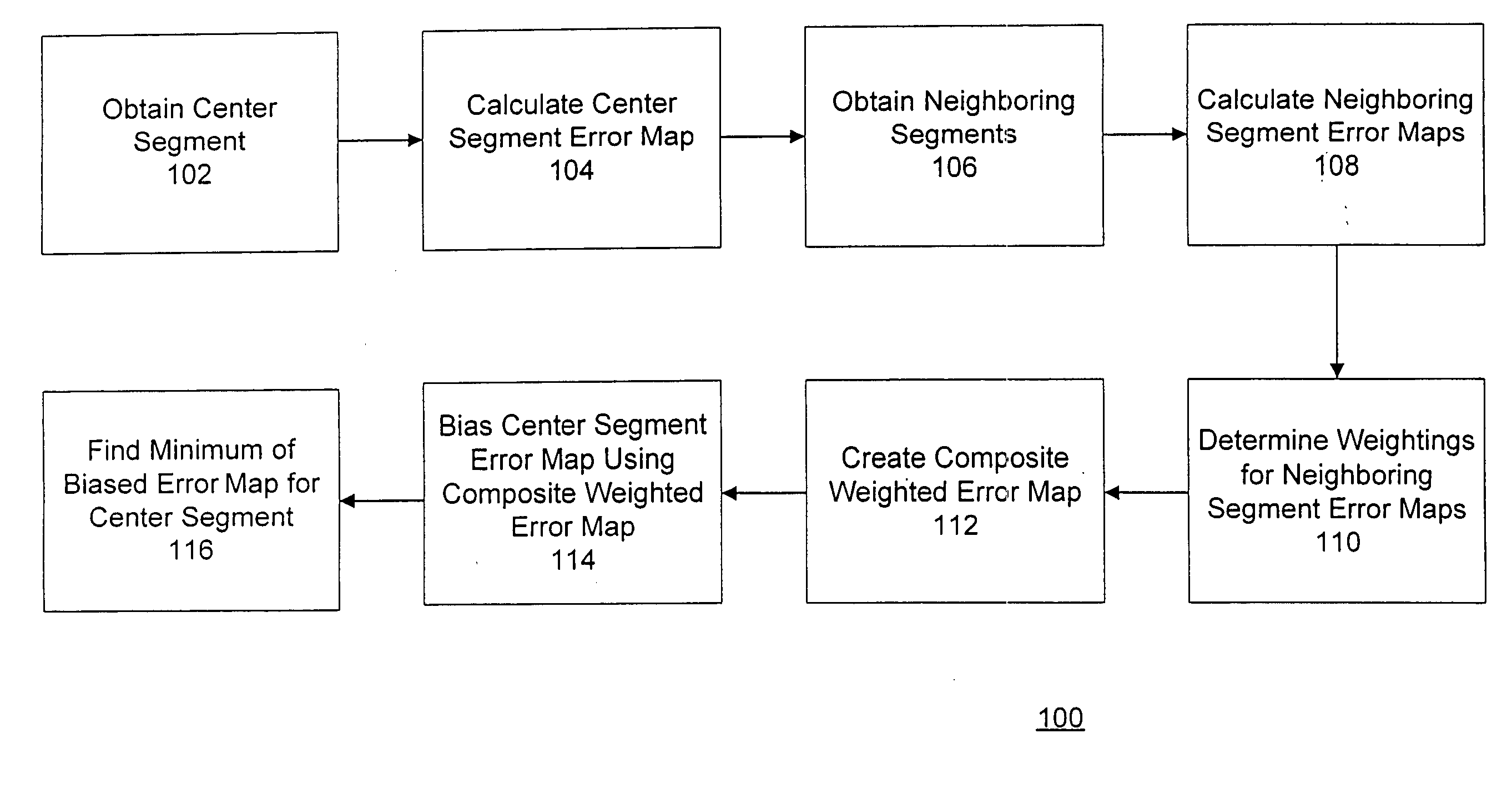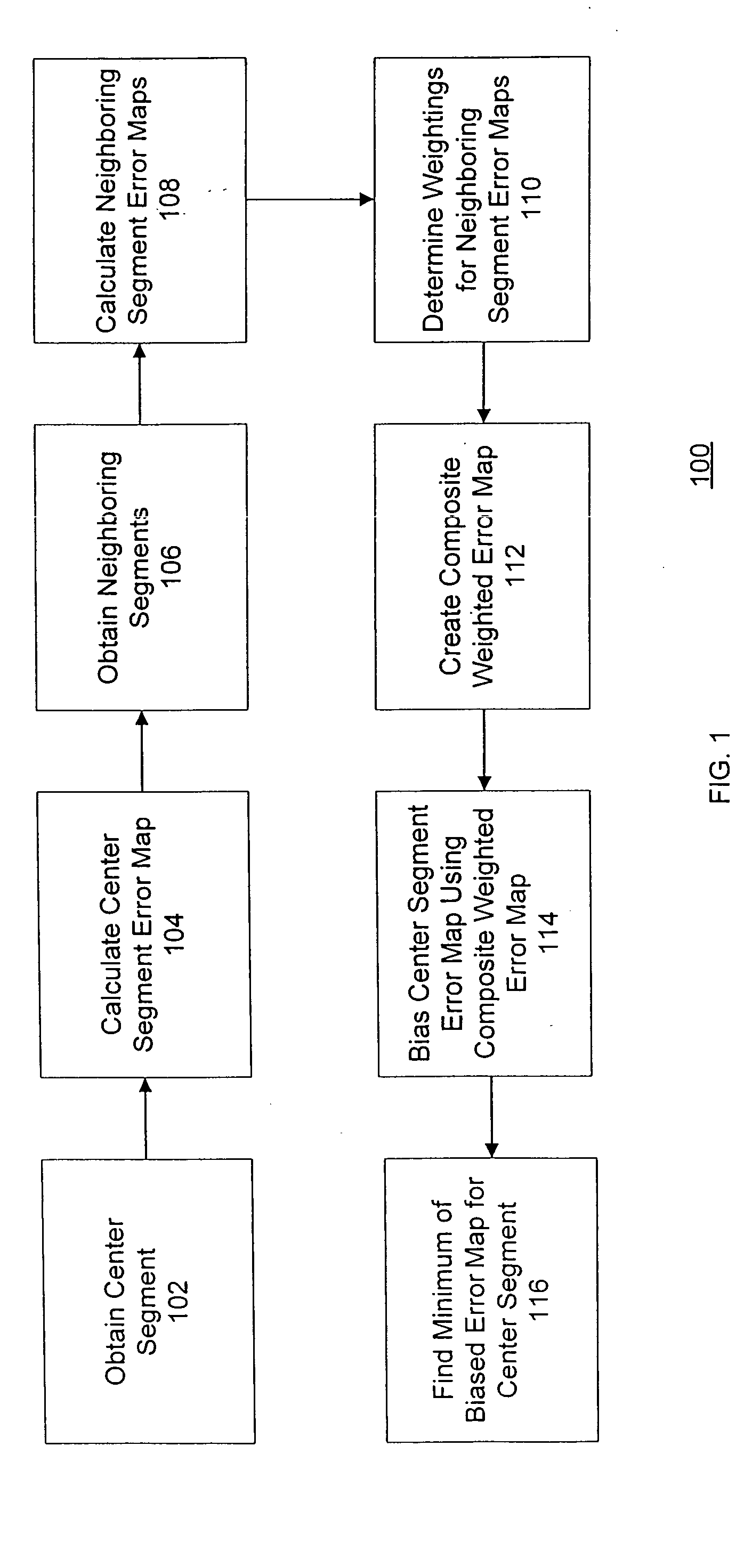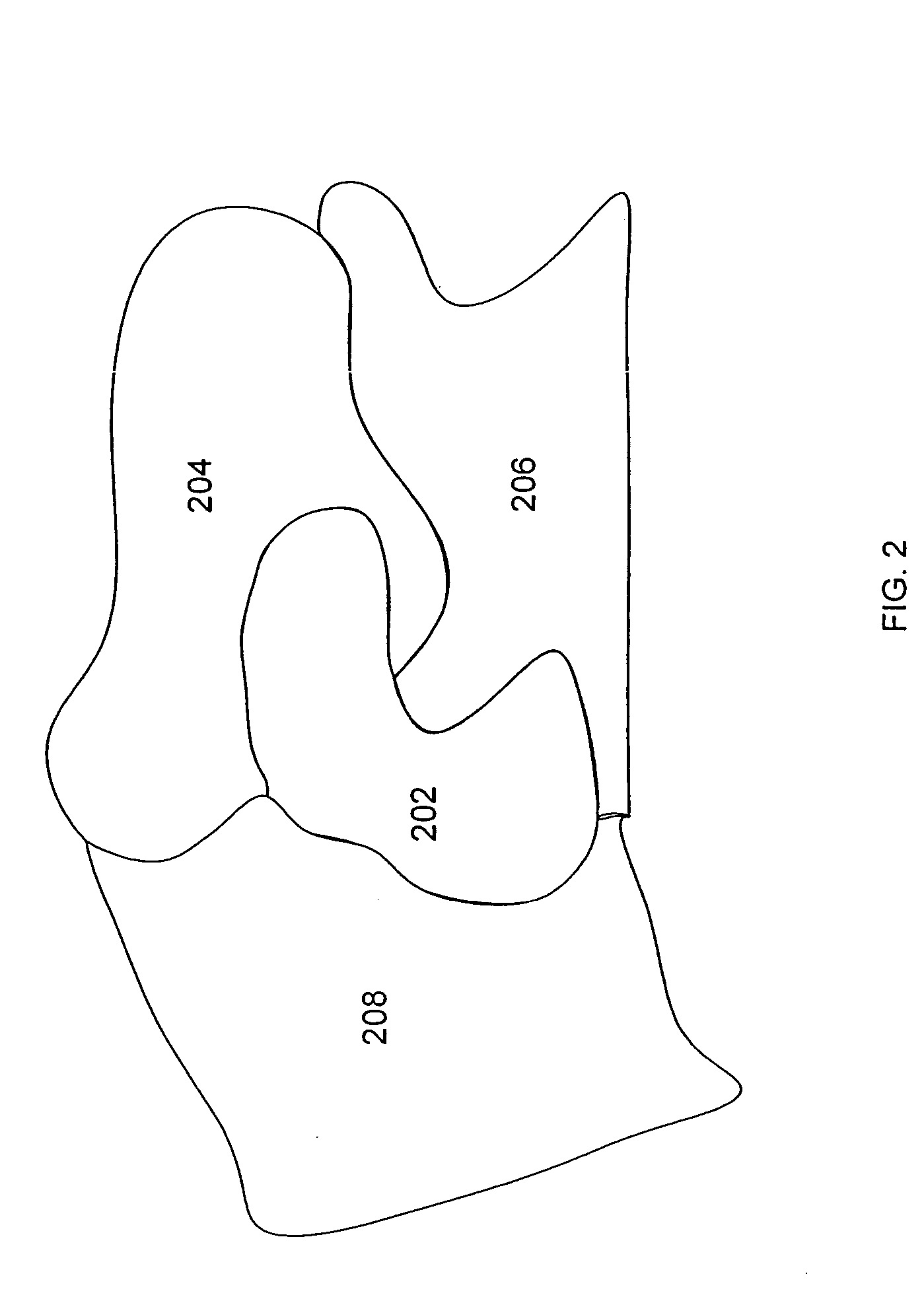Local constraints for motion matching
a motion matching and local constraint technology, applied in the field of image processing, can solve problems such as difficulty in efficient motion matching, false matching, and difficulty in motion matching, and achieve the effect of reducing common motion matching problems
- Summary
- Abstract
- Description
- Claims
- Application Information
AI Technical Summary
Benefits of technology
Problems solved by technology
Method used
Image
Examples
Embodiment Construction
[0016] As described below, the problem of ambiguous matching is addressed, in one embodiment according to the present invention, by (a) using segments as the image regions to be matched (instead of arbitrarily selected image regions), and (b) biasing the motion of the segment to be matched with the motion of its neighboring segments. The biasing effectively constrains the segment displacement as a shock absorber constrains displacement of a nearby coupled item. Although using segments is not necessary, it tends to provide better results than using arbitrarily selected image regions.
[0017]FIG. 1 is a flow chart of a method for implementing local constraints for motion matching in accordance with an embodiment of the invention. The method 100 as depicted includes eight steps (102, 104, 106, 108, 110, 112, 114, and 116).
[0018] In the first step 102, a segment is obtained on which the motion matching is to be performed. This segment is herein referred to as the “center” segment. The s...
PUM
 Login to View More
Login to View More Abstract
Description
Claims
Application Information
 Login to View More
Login to View More - R&D
- Intellectual Property
- Life Sciences
- Materials
- Tech Scout
- Unparalleled Data Quality
- Higher Quality Content
- 60% Fewer Hallucinations
Browse by: Latest US Patents, China's latest patents, Technical Efficacy Thesaurus, Application Domain, Technology Topic, Popular Technical Reports.
© 2025 PatSnap. All rights reserved.Legal|Privacy policy|Modern Slavery Act Transparency Statement|Sitemap|About US| Contact US: help@patsnap.com



